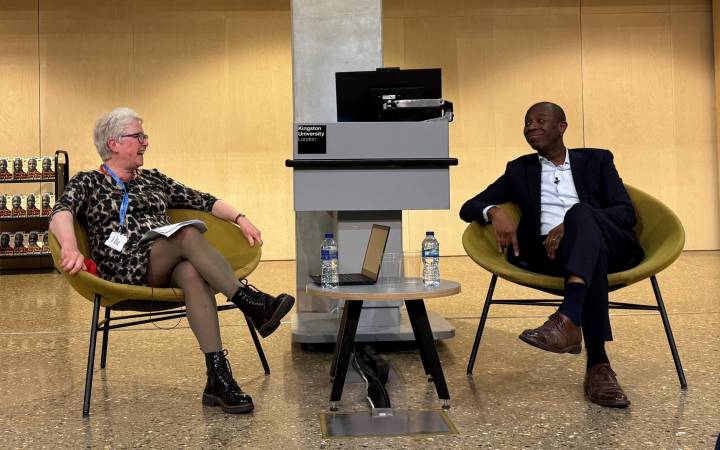Geographers to collaborate on landscape database for Britain
Posted Monday 14 November 2011
-Freefoto-M1.jpg)
From brownfields to green belts and landslides to flood plains - planners, businesses and even ramblers are set to benefit from a new online map that could reveal the geographical blueprint of Britain.
Geographers from Kingston University and the University of Liverpool will be sifting through tens of thousands of journal papers, government reports, books and PhD dissertations as part of the pilot project designed to create the first landscape database of Britain. The data, which sits with separate organisations including libraries, government departments and universities, will be brought together for the first time to develop an interactive online map allowing users to explore information about Britain's changing landscapes. Taken to its full potential, the database could play an essential role in sustainable environmental management and development, as well as tourism.
Dr Mike Smith a reader from the School of Geography, Geology and Environment, is leading Kingston University's involvement in the project. "Kingston University's expertise in Geographical Information Systems (GIS) is essential in designing a system that can efficiently manage the data and make it easily accessible," he said.
"Kingston has a long tradition of GIS, the technology that combines mapping and statistical data for analysis and, with our expertise in geomorphological mapping, it made the University a natural partner for this project," Dr Smith said. "Never before has this information been brought together in this way. It will form an invaluable resource that will enable local authorities, government and businesses to locate vital information about Britain's landscapes."
 Glacial, fluvial and coastal categories will be among the landforms featured on the database. "The online map will allow users, including civil engineering companies, conservation trusts, local authorities and major land owners, to easily search geographical data to inform their decision making on a host of important projects," Dr Smith said.
Glacial, fluvial and coastal categories will be among the landforms featured on the database. "The online map will allow users, including civil engineering companies, conservation trusts, local authorities and major land owners, to easily search geographical data to inform their decision making on a host of important projects," Dr Smith said.
In its pilot phase, the 13-month project will focus on two areas of Britain including part of the High Speed 2 (HS2) rail link between London and the West Midlands. The study will demonstrate not only the breadth of research available, but also begin to help identify where there are gaps in knowledge. "If the project moves beyond the pilot, we could do this for the whole of the United Kingdom to direct future research priorities and help researchers fill in the gaps," Dr Smith said.
Professor Janet Hooke from the University of Liverpool said the project would demonstrate how pooled information could save money. "The difficulty at the moment is that information is scattered across various publications over a considerable period of time," she explained. "The absence of such information can prove costly to land and buildings projects, as well as have a damaging impact on the sustainability of the natural environment."
The research is supported by the Natural Environment Research Council (NERC) and promoted by the British Society for Geomorphology.
- Find out more about research in geographical information systems at Kingston University.
Contact us
General enquiries:
Journalists only:
- Communications team
Tel: +44 (0)20 8417 3034
Email us



